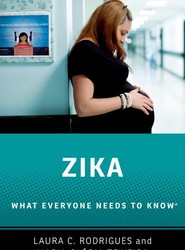(To see other currencies, click on price)
MORE ABOUT THIS BOOK
Main description:
Over the past four decades, the prevalence of autism, asthma, ADHD, obesity, diabetes, and birth defects has increased substantially among children throughout the world. Not coincidentally, more than 80,000 new chemicals have been developed and released into the global environment during this same period. Today the World Health Organization attributes more than one third of all childhood deaths to environmental causes.
Children's environmental health is a new and growing discipline that responds to the expanding threat of chemical and environmental hazards to child health. Amid mounting evidence that children are especially sensitive to their environment-and that exposure during their developmental "windows of susceptibility" can trigger cellular changes that lead to lifelong disease and disability-there is a compelling need for continued scientific study of the relationship between children's health and
their environment.
Children and Environmental Toxins: What Everyone Needs to Know (R) offers an authoritative yet accessible question-and-answer guide to the "silent spring" of threats in our collective backyard. As the burdens of environmental toxins and chronic disease continue to defy borders, this book will be an invaluable addition to the conspicuously sparse literature in this area.
Contents:
Preface
Introduction
1. Changing diseases in a changing environment
Patterns of childhood disease -- then and now
Environmental changes
2. New chemicals and new childhood chemical exposures
Explosive growth of chemicals
Early warning signs
Gaps in safety and toxicity testing
Childhood exposure to new chemicals
3. Children's unique vulnerability to toxic chemicals in the environment
Unique windows of vulnerability exist in children
Children process toxic exposures more slowly than adults
Children's higher metabolism rates make different demands on their bodies than adults
Childhood exposures can incubate for many years and may cause adult disease
Exposures are proportionately greater in children than in adults
Normal hand-to-mouth behavior increases their exposure to toxins
Children live closer to the ground and have different exposures than adults
Other risk factors compound the problem
4. The links between childhood disease and toxic chemicals in the environment
The increase in autism, ADHD, and other problems of the developing brain
The increase in male birth defects, early puberty in girls, and testicular cancer in young mem
The increased incidence of asthma and allergies
New links between household toxins, obesity, and diabetes
The links between childhood exposures and adult disease
The growing problems with reproduction
The increases in childhood cancer
5. A Guide for Parents: Keeping Your Child Safe from Environmental Toxins
An environmental checklist for your home
Over 100 ways to protect your children and promote health as they grow
At home
10 ways to make baby's room safer
8 ways to avoid asthma and allergy attacks
10 practical ways to prevent lead poisoning
25 ways to minimize your child's exposure to endocrine disruptors
9 cautions about pesticides
11 ways to reduce exposure to unsafe foods
14 tips for avoiding exposure to household chemicals
6 ways to grow your child into a healthy adult
At day care
10 ways to make day care safer
At school
10 ways to make school safer
In the neighborhood
10 ways to make the neighborhood safer
Tips for future moms and dads
10 ways to protect future children
6. A Call to Action
Children's health, toxic chemicals and you
Policy and legislation: where we stand now
Evidence-based prevention
US standards vs standards in other countries
Consequences of our current situation
A call for a new public health revolution
New ways to protect children from environmental toxins
Our call to action - community based actions, state initiatives, federal legislation
Career opportunities for the future of public health
PRODUCT DETAILS
Publisher: Oxford University Press (Oxford University Press Inc)
Publication date: April, 2018
Pages: 304
Dimensions: 140.00 x 211.00 x 16.00
Weight: 276g
Availability: Available
Subcategories: Diseases and Disorders, General Issues, General Practice, Pharmacology, Public Health
Publisher recommends
From the same series
































